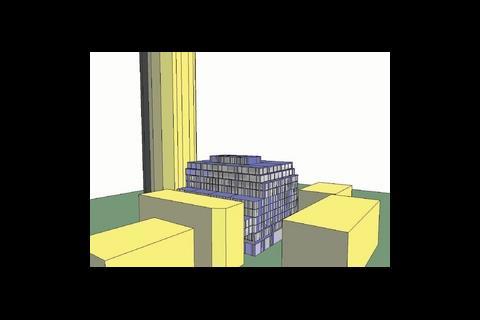I was very glad to read the article “Model behaviour” in the September issue of BSj because there is a need to share knowledge about approaches to meeting Part L requirements.
Use of a dynamic thermal model such as IES VE Compliance rather than SBEM for demonstrating compliance seems especially advisable for school buildings, because of the variation with time of internal and solar gains, ventilation, and demand for heat in these buildings, and SBEM’s seeming inability to reflect these.
However, VE Compliance seems to assume an excessive lighting gain in the classrooms of its notional building, and because much of your analysis of carbon saving came from lighting, the design may be meeting the target emission rating with less effort than perhaps should be required.
The NCM database of profiles and templates sets a target illuminance of 300 lux in classrooms and classifies them as an “office, storage or industrial space”. Such spaces were shown in the draft Part L2A as having a lighting load of 3.75W/m2 per 100 lux, which would be equivalent to 11.25W/m2 for 300 lux (as in classrooms) and 18.75W/m2 for 500 lux (as in offices).
IES and your analysis assume 18.75W/m2 in offices but 15.6W/m2 in classrooms (the equivalent of 5.2W/m2 per 100 lux – set as the lighting load for “other spaces” in the notional building according to the Part L2A draft). Given that the NCM template assumes classroom lights are on for 1701 hours a year, 15.6W/m2 will generate 11.2kgCO2/m2 pa (I’m not sure how your analysis managed more than 20kgCO2/m2 pa for lighting), whereas 11.25W/m2 will generate 8.1kgCO2/m2 pa – 28% less.
It seems important to highlight this discrepancy in such a widely used model because it could undermine the point of tightening building regulations by allowing compliance to be achieved with standard practice.
Sam Hunt, Centre for Energy and the Environment, University of Exeter
IES responds…
We have checked that Standard NCM figures for classroom lighting are accurate to the current database, which may vary from an earlier draft of L2A. The classroom lux figure assumed was indeed 300 lux with a power density of 5.2W/m2 per 100 lux.
The example school shows results for an entire school taken from a recent project. Confusion may result as the school contains a number of different room types, which all attract different lighting activity data.
In the test building the calculated notional lighting figure was 13.2 with an actual building figure of 6.8.
David McEwen, director, IES
Source
şÚ¶´ÉçÇř Sustainable Design




















No comments yet